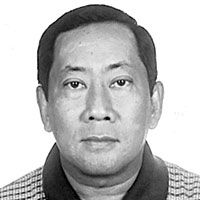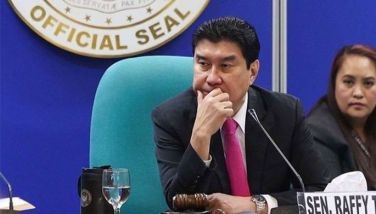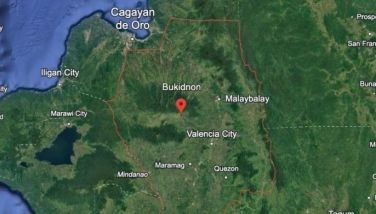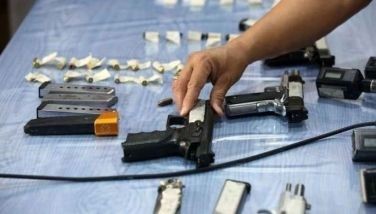The Battle of Sibuyan Sea and Leyte Gulf

I read in another newspaper about a plan to re-float the sunken Musashi, the largest battleship in the world, and convert it into a tourist attraction and a symbol of the friendship between the Philippines and Japan. I don’t know about the symbolic part, but I do agree that it would certainly become a major tourist attraction for the Philippines. After all, the Battle of Leyte Gulf may have been fought between the Japanese and the Americans, but this greatest of battles happened right in our backyard.
The Musashi was the flagship of then Admiral Mineichi Koga, commander-in-chief of the Imperial Japanese Navy’s Combined Fleet, who took over the command on April 18, 1943 when Admiral Isoroku Yamamoto, the architect of the attack on Pearl Harbor, was ambushed by a squadron of Lockheed P-38 Lightnings and crashed in Bougainville, the Solomons.
Allow me to refresh the memory of our faithful readers who may have forgotten who Admiral Koga is as we wrote his story sometime ago. This story is about the highest-ranking Japanese officer ever captured in the entire Pacific War. He was captured some 35 kilometers south of Cebu City on April 1,1943 by Cebuano guerrillas under Col. James Cushing.
On March 31, 1943, two Kawanishi “Mavis” flying boats carrying Admiral Koga and his chief of staff, Rear Admiral Shigeru Fukudome, flew from Korkor, Palau to Davao as they were transferring their headquarters to Mindanao 600 miles away. But the two seaplanes ran into a violent storm and got lost and eventually separated somewhere between Leyte and Cebu.
Admiral Koga’s plane vanished, while Admiral Fukudome’s plane crashed at sea off San Fernando, Cebu where he survived with his crew and they were captured by guerrillas. A guerrilla also found in the flotsam the so-called “Koga papers,” the secret Z-Plan or Sho Plan for the defense of the Philippines. The Koga papers were sent to Gen. MacArthur’s headquarters in Australia via the submarine USS Crevalle. Because of this secret information, Gen. MacArthur decided to change his invasion plans and advance the date of invasion to October 1944 in Leyte instead of Mindanao in 1945.
I’m writing about the super battleship Musashi because it is the 64th anniversary today of the Battle of Sibuyan Sea, which was the opening act of the famous Battle of Leyte Gulf, the greatest naval battle in the world. The Battle of Leyte Gulf was Japan’s counter-attack because of the invasion of Leyte on Oct. 20, 1944. Both super battleships Yamato and Musashi (they carried 18-inch guns, while the US Navy’s battleships only had 16-inch guns) were under the command of Vice Admiral Takeo Kurita and sailed from Brunei on Oct. 23, 1944, then through the Palawan passage and into Sibuyan Sea on Oct. 24, 1944.
When the battle started, the Yamato was hit by dive-bombers and immediately withdrew to Palawan, while her sister-ship, the Musashi, was hit by Hellcats from the USS Intrepid (this carrier is now a museum docked in New York City), the USS Bunker Hill and other carriers of Task Force 38. But the deadly blow came from the USS Enterprise, which hit Musashi with a total of 20 torpedoes and 17 bombs, with 18 bombs hitting near her bow. The Musashi sank in Sibuyan Sea (I guess this is not far from the site of the sinking of the M/V Princess of the Stars) with her 2,399 men on board. Only 1,023 survived the sinking, while Admiral Kurita retreated to San Bernardino Strait.
Meanwhile, the US also lost the carrier USS Princeton in that battle, but she was scuttled east of Luzon, while the USS Birmingham and many other American Navy ships were badly damaged. The following day, the other battle of Leyte Gulf commenced and this was the Battle of Surigao Strait, one of the turning points in the Battle of Leyte Gulf. But then that’s another great history that someday I would also write about.
Incidentally, another date worth remembering is Oct. 19, 1944 as 64 years ago, Vice Admiral Takijiro Onishi arrived in Clark Air Field to assume the command of the Fifth Base Air Force and immediately after his arrival, he called a meeting of all his officers and created the Kamikaze Tokubetsu Kogekitai (the Divine Wind Special Attack Squad), which was named after the typhoon that destroyed the invading Mongols in 1570. This suicide tactic was first used when Gen. MacArthur landed in Leyte on the following day, Oct. 20, 1944, with devastating effect on the US Navy.
The Battle of Leyte Gulf has no equal in the annals of naval warfare. With tourism becoming a major industry for Filipinos, it is high time that we take advantage of World War II history, especially the Battle of Leyte Gulf, as this battle really took place in many parts of the country. And if they would raise the Musashi to make it a tourist attraction, I’m all for it!
* * *
For e-mail responses to this article, write to [email protected]. Bobit Avila’s columns can also be accessed through www.philstar.com. He also hosts a weekly talkshow, “Straight from the Sky,” shown every Monday, 8 p.m., only in Metro Cebu on Channel 15 of SkyCable.
- Latest
- Trending
































